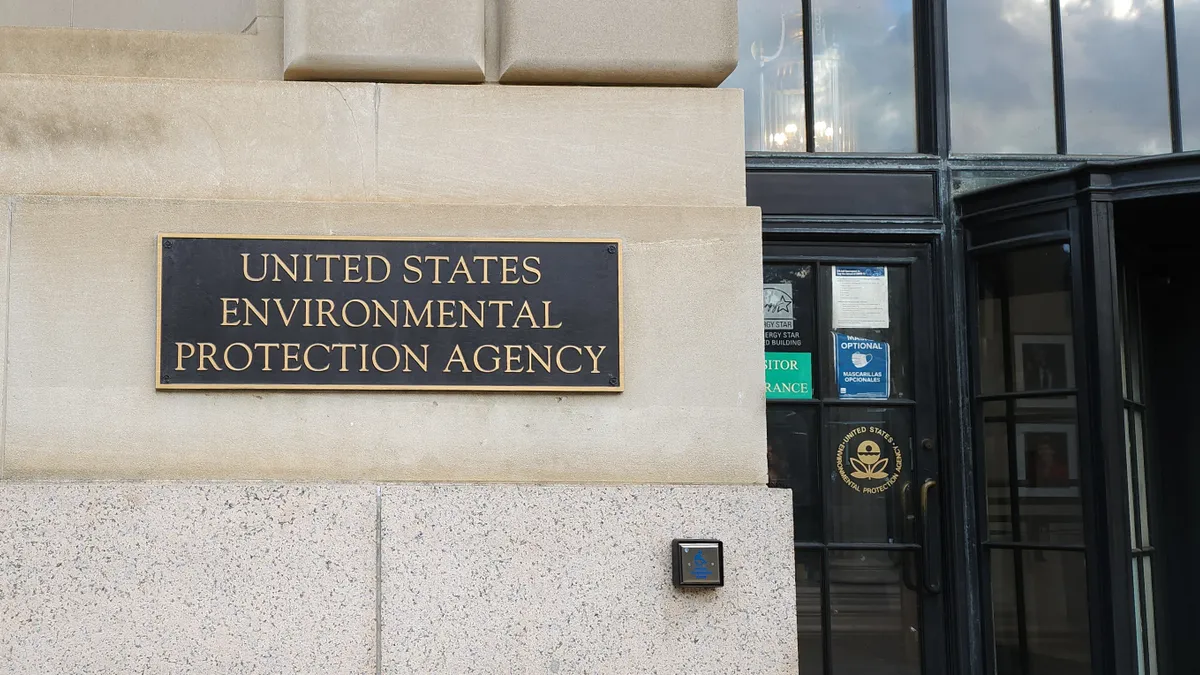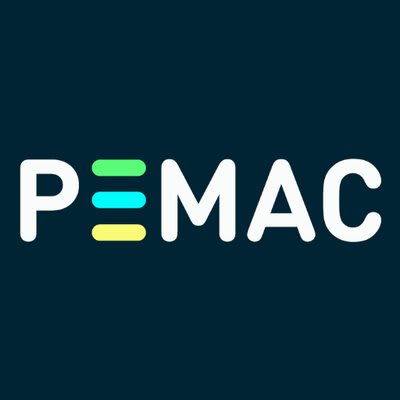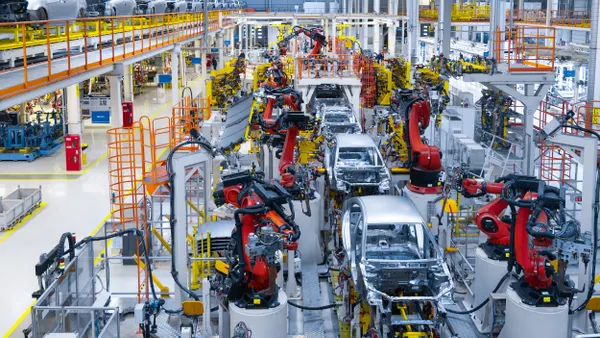Dive Brief:
- The Environmental Protection Agency finalized a rule last week to cut the maximum amount of soot pollution factories may emit, a change it says will prevent 4,500 premature deaths.
- The rule will lower the allowable amount of solid or liquid particle emissions created by a facility from 12 micrograms per cubic meter to 9 micrograms per cubic meter. The revised regulation could generate up to $46 billion in financial health benefits in 2032 due to the agency’s early intervention in protecting public health, according to the EPA.
- New or expanding facilities with large emissions that are required to install pollution control systems to obtain a Clean Air Act permit will be obligated to outline how the facility will be operated and monitored in compliance with the new emissions caps.
Dive Insight:
The finalized rule has received pushback from business and manufacturing trade groups like the National Association of Manufacturers, which claims the change will reduce the U.S. GDP by $200 billion and cost one million jobs by 2031.
NAM President and CEO Jay Timmons claimed in a statement last week that the new rule undermines President Joe Biden’s manufacturing agenda.
“New manufacturing investments envisioned by the CHIPS and Science Act, the Bipartisan Infrastructure Law and the energy provisions of the Inflation Reduction Act will be subject to these new requirements,” Timmons said. “This revised standard will force some communities to choose which — if any — investments can proceed without running afoul of the EPA’s decree.”
In October, CEOs from over 70 trade groups including NAM, the Society of Chemical Manufacturers and Affiliates and the American Petroleum Institute, sent a letter to White House Chief of Staff Jeff Zients urging the EPA to keep the old rule.
The groups said that the new regulation could put nearly 40% of the population in areas that exceed or do not meet the air quality standards, making it difficult to obtain permits for new factories and putting the creation of new jobs at risk.
They also compared the 9 micrograms per cubic meter to other countries, such as the European Union, where the air quality standard is 25 micrograms per cubic meter.
“Lowering the current standard so dramatically would create a perverse disincentive for American investment,” the letter said. “The EPA’s proposal could force investment in new facilities to foreign countries with less stringent air standards, thereby undermining the administration’s economic and environmental goals.
The finalized rule will go into effect 60 days after it's published on the Federal Register. Facility owners who have already obtained their required Clean Air Act permits will not have to modify their sites.
However, facility owners with permit applications still in process may have to modify their projects and the types of emission controls installed. They will also be required to provide a more detailed assessment of their project blueprint that shows how the facility will uphold the regulations.
The new soot pollution rule is the first update to the regulation since 2012. The EPA first began reconsidering the maximum soot allowance in 2021, as the existing rule was deemed insufficient to protect public health.
The size of soot particles may impact respiratory systems and cause cardiovascular problems as it enters the lungs or bloodstream, according to the EPA. Ensuing health problems could include asthma, heart attacks and consistent coughing.
The federal agency also based its recent decision on input from its Clean Air Scientific Advisory Committee, comprised of scientists in toxicology, environmental and medical fields.
“The most vulnerable among us are most at risk from exposure to particulate matter, and that’s why it’s so important we take a hard look at these standards that haven’t been updated in nine years,” EPA Administrator Michael Regan said in a June 2021 press release.












